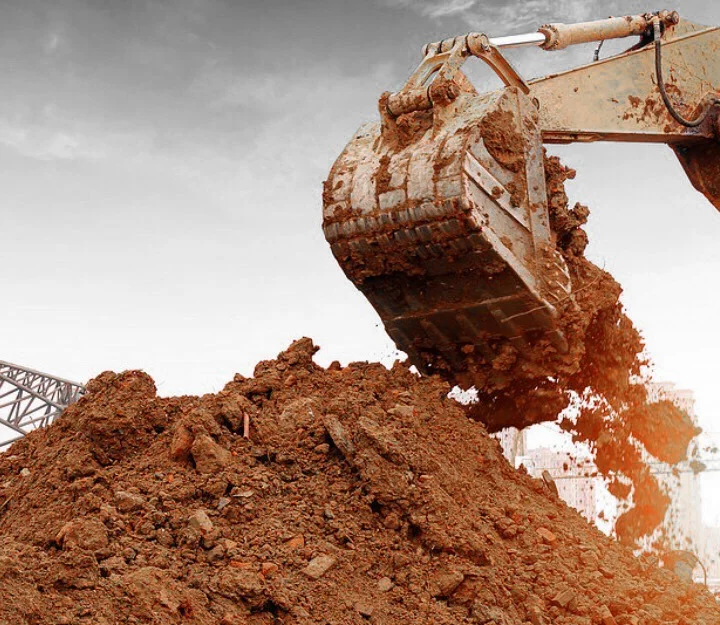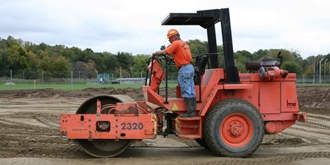Lancaster Trenching - Expert Trenching Solutions in Lancaster, Ohio
Lancaster Trenching - Expert Trenching Solutions in Lancaster, Ohio
Blog Article
Extensive Exploration: The Scientific Research Behind Superior Excavation Practices
From old hand tools to modern hydraulic excavators, the evolution of excavation techniques has been a testimony to human ingenuity and technological advancements. What truly establishes remarkable excavation practices apart is a deep understanding of geological concepts, paired with the use of cutting-edge devices and approaches.
Advancement of Excavation Strategies
Throughout background, the development of excavation techniques has played a crucial duty ahead of time construction methods and archaeological discoveries. From the primary tools utilized by our forefathers to the sophisticated equipment utilized in modern times, the development of excavation methods has actually significantly transformed just how we approach various tasks.
In ancient times, hands-on labor with standard tools such as wheelbarrows, shovels, and pickaxes was the main method of excavation. This labor-intensive procedure restricted the depth and extent of excavations, frequently leading to slow-moving progression and restricted access to particular websites. Nonetheless, as civilizations advanced, so did the techniques and tools utilized for excavation.
The Industrial Transformation marked a turning factor in excavation practices with the introduction of steam-powered machinery. In modern times, modern technology plays an essential function in excavation, with developments like GPS systems, drones, and 3D scanning enhancing precision and performance in the field.
Duty of Innovation in Excavation

The combination of innovative modern technology has actually essentially changed the area of excavation, boosting accuracy and effectiveness to unprecedented degrees. One of the key technical improvements that has substantially impacted excavation practices is the application of GPS systems. These systems permit specific mapping of excavation websites, enabling operators to properly find underground utilities and frameworks. Furthermore, using telematics in excavation devices has actually enabled real-time surveillance of maker performance, bring about positive upkeep and enhanced functional performance.
Additionally, the arrival of 3D modeling and simulation software has structured the planning process for excavation jobs. Operators and engineers can now envision the whole excavation process before beginning, identifying possible difficulties and maximizing workflow. Combined with this, the implementation of drones in excavation activities has actually promoted aerial surveys, volumetric measurements, and site assessments with unequaled rate and precision.
Geological Concepts in Excavation
An understanding of geological principles is vital for guaranteeing the structural honesty and stability of excavation sites. Geological variables play a vital duty in establishing the expediency and safety of excavation tasks.
By carrying out thorough geological surveys and evaluation, designers and excavators can establish approaches to minimize risks and ensure the successful conclusion of excavation tasks. Inevitably, incorporating geological concepts right into excavation techniques is essential for accomplishing secure, effective, and lasting results.

Newest Tools for Excavation
In the realm of excavation practices, modern advancements in devices have transformed the efficiency and precision of excavation processes. These drones can give comprehensive aerial studies of excavation sites, using real-time data on topography and prospective hazards.
An additional cutting-edge tool gaining appeal is the implementation of 3D printing modern technology for producing custom excavation tools. This enables for the production of specialized devices that are tailored to the certain requirements of a task, enhancing performance and minimizing downtime.
Furthermore, innovations in materials scientific research have caused the development link of more powerful and more long lasting excavation devices. lancaster excavation. Tungsten carbide-tipped excavator accessories, for instance, offer premium performance in challenging ground problems, improving efficiency on-site
Scientific research's Effect on Excavation Practices

In addition, improvements in products scientific research have resulted in the creation of more powerful, extra resilient excavation tools and tools. For example, using composite materials in shovels and miners has actually improved their performance and check long life, eventually increasing performance on excavation sites. In addition, scientific study on soil technicians and geotechnical engineering has actually offered beneficial insights into dirt actions, allowing excavation experts to make informed choices relating to excavation methods and soil stablizing strategies. Generally, science proceeds to drive innovation and enhancement in excavation techniques, making excavation projects much more effective, cost-effective, and sustainable.

Verdict
To conclude, the development of excavation methods has been significantly influenced by developments in technology and a much deeper understanding of geological principles. The most recent devices and tools made use of in excavation have boosted performance and precision in the area. The application of clinical understanding has actually substantially enhanced excavation methods, causing much more efficient and lasting approaches for digging deep into different kinds of products.
In the realm of excavation techniques, modern developments in devices have actually changed the efficiency and precision of excavation processes. By leveraging clinical principles, the excavation industry has been able to considerably boost efficiency, accuracy, and safety in excavation processes. GPR enables excavation groups to non-invasively check and map subsurface frameworks, energies, and potential risks, allowing them site to plan excavation projects with better accuracy and minimized danger of accidents.
In addition, clinical research on soil mechanics and geotechnical engineering has actually provided valuable understandings right into dirt habits, allowing excavation professionals to make informed decisions concerning excavation approaches and dirt stablizing strategies. In general, scientific research proceeds to drive technology and improvement in excavation methods, making excavation jobs a lot more reliable, affordable, and sustainable.
Report this page